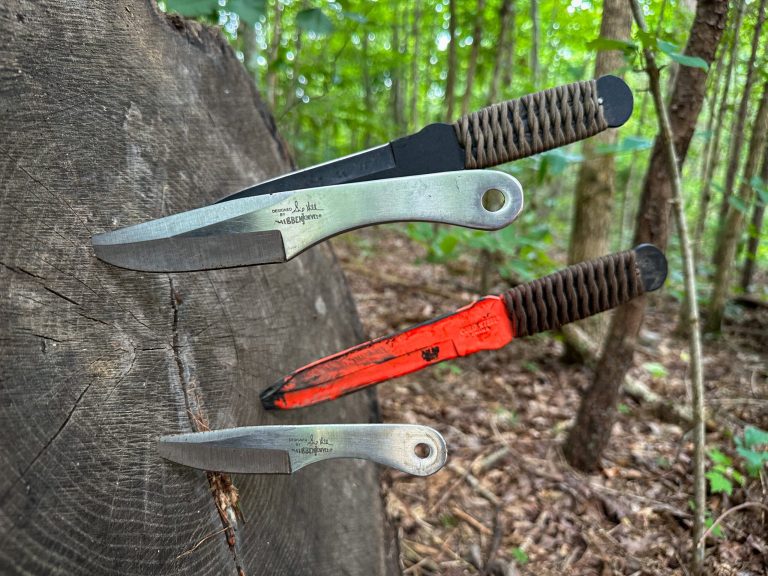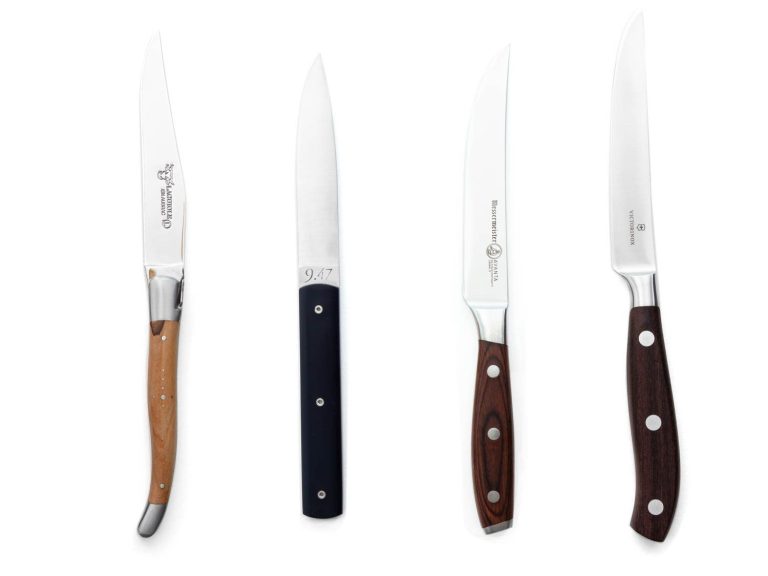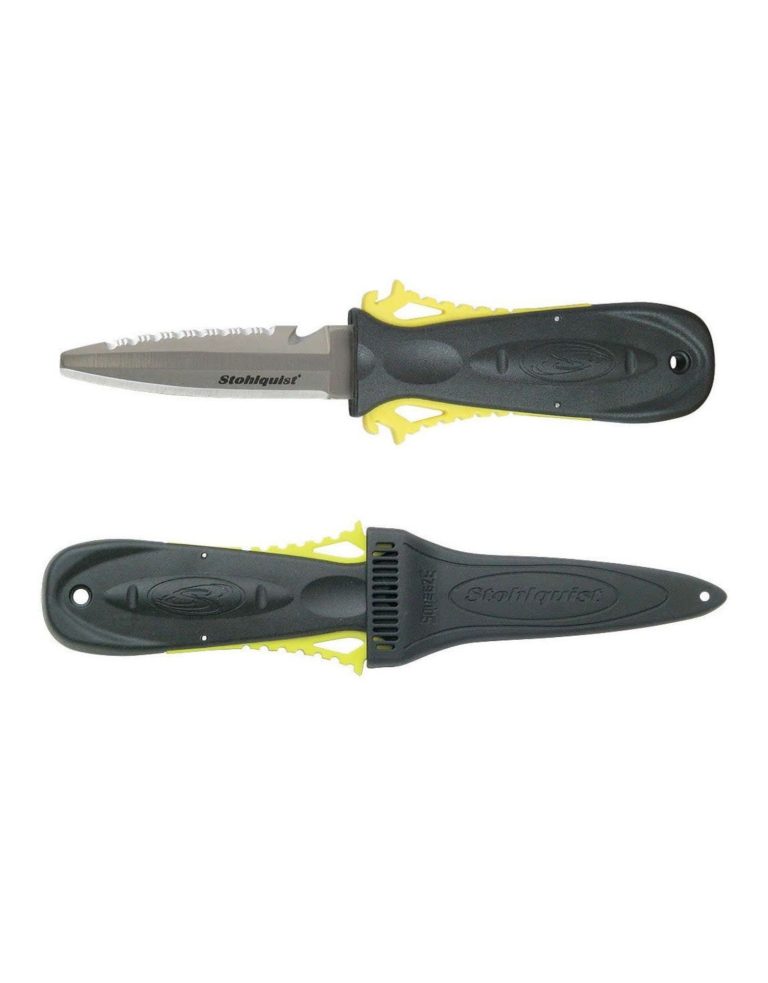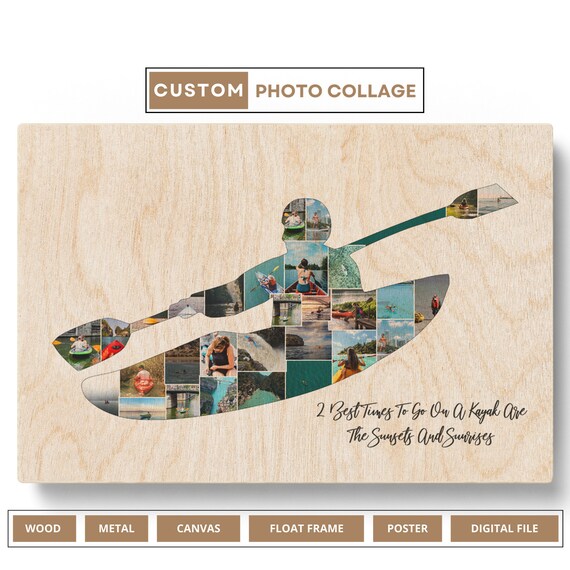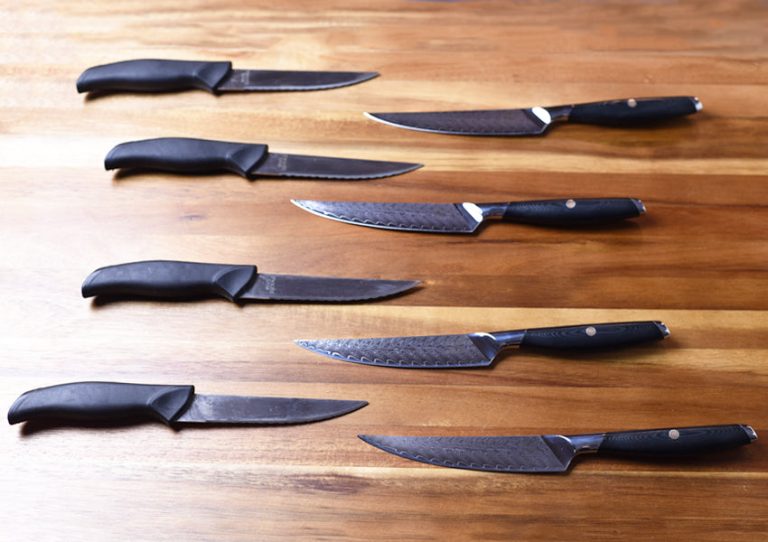Selecting the Perfect Fishing Knife for Your Tackle Box
Selecting the perfect fishing knife for your tackle box is crucial. This guide will help you choose the right knife based on the size, blade material, and handle type, ensuring a successful and enjoyable fishing experience.
Whether you need a versatile all-purpose knife or a specialized fillet knife, the right choice will depend on your specific needs and preferences. By considering factors such as durability, sharpness, and grip, you can find a fishing knife that meets your requirements and enhances your fishing adventures.
With a reliable and efficient knife by your side, you can confidently tackle any fishing task and make the most out of your angling excursions.
Factors To Consider When Choosing A Fishing Knife
Choosing the perfect fishing knife for your tackle box involves considering factors like blade material, handle grip, and size for optimal performance on your fishing trips.
When it comes to selecting the perfect fishing knife for your tackle box, there are several key factors that you should consider. From the blade material to the handle design, each aspect plays a crucial role in determining the knife’s overall performance and suitability for your fishing needs.
Here are some important factors to keep in mind:
Blade Material:
- Stainless steel vs. Carbon steel: Both stainless steel and carbon steel blades have their own advantages. Stainless steel is known for its excellent resistance to corrosion, making it a great choice for saltwater fishing. On the other hand, carbon steel offers superior sharpness and easier sharpening, making it ideal for cutting through tough materials.
- Best options for corrosion resistance: Look for blades made from high-quality stainless steel, such as 420 or 440 stainless steel. These alloys are known for their exceptional resistance to corrosion, ensuring that your knife remains in top condition even when exposed to harsh fishing environments.
- Balancing between durability and sharpness: Consider the type of fishing activities you’ll be engaging in. If you need a more durable blade for heavy-duty tasks like cutting through thick lines or scaling fish, opt for a blade with higher carbon content. However, if precise cuts and sharpness are your priority, choose a blade with a higher stainless steel content.
Blade Length:
- The importance of choosing the right length for different fishing activities: The blade length significantly affects the knife’s versatility and performance. A longer blade is beneficial for activities like filleting larger fish, while a shorter blade offers better maneuverability for tasks like removing hooks or cutting bait.
- Considering legal restrictions for certain fishing locations: Be aware of any regulations that may limit the length of the knife you can carry. Certain fishing locations have specific restrictions in place to ensure safety and adherence to local laws. Always check the regulations before selecting a knife for your fishing trips.
Handle Design And Material:
- Ergonomic considerations for a comfortable and secure grip: An ergonomic handle design is essential to ensure a comfortable and secure grip, especially during prolonged fishing sessions. Look for knives with contoured handles that offer a natural fit in your hand, reducing fatigue and improving control.
- Different handle materials (rubber, wood, plastic) and their pros and cons: Each handle material has its own set of advantages and disadvantages. Rubber handles provide excellent grip, even when wet, while wooden handles offer a classic and aesthetic appeal. Plastic handles are lightweight and durable, making them suitable for a variety of fishing conditions.
- Importance of a non-slip handle for safety: Safety should always be a priority when handling knives in a fishing environment. Choosing a knife with a non-slip handle ensures a secure grip, reducing the risk of accidental slips or injuries. Look for handles that feature textured patterns or rubberized coatings for enhanced grip and safety.
Now that you have a better understanding of the factors to consider when choosing a fishing knife, you can make an informed decision that best suits your specific fishing needs. Remember to prioritize your requirements for blade material, length, and handle design to enhance your fishing experience and ensure a reliable and durable tool in your tackle box.
Types Of Fishing Knives For Different Fishing Tasks
Looking to add a fishing knife to your tackle box? Explore a range of fishing knives designed for different tasks such as filleting, scaling, and cutting lines. Find the perfect knife to enhance your fishing experience.
Fillet Knives:
- Fillet knives are specifically designed for cleaning and preparing fish.
- These knives have a thin, flexible blade that allows for precise cuts and smooth filleting.
- The sharpness of fillet knives ensures minimal wastage of meat and reduces the effort needed for filleting.
- They are available in various blade lengths, allowing you to choose the one that suits your needs.
- Fillet knives are essential for anglers who enjoy cooking their catch.
Bait Knives:
- Bait knives are smaller knives used for cutting and preparing bait.
- These knives typically have a serrated or hooked blade, which makes cutting through tough bait easier.
- The compact size and lightweight design of bait knives allow for easy handling and storage.
- They are ideal for slicing through baitfish or cutting bait into smaller pieces to attract fish.
- Bait knives are a valuable tool for ensuring your bait is prepared efficiently and effectively.
Gutting Knives:
- Gutting knives are designed specifically for removing the internal organs of fish.
- These knives have a short, sturdy blade with a sharp and curved edge.
- The curved blade allows for precise cuts and reduces the risk of puncturing the fish’s organs.
- Gutting knives are typically strong and durable, allowing for efficient gutting without the blade bending or breaking.
- They are indispensable for anglers who prefer to clean their fish on the spot.
Line Cutting Knives:
- Line cutting knives are handy tools for cutting fishing lines, ropes, or other materials.
- These knives have a sharp and pointed blade that easily slices through fishing lines without fraying or damaging the line.
- The compact size and lightweight nature of line cutting knives make them easy to carry in your tackle box or pocket.
- They are particularly useful for cutting tangled lines or ropes quickly and safely.
- Line cutting knives are a must-have for any angler, ensuring you have a tool readily available for any line-related issue.
By understanding the different types of fishing knives and their specific tasks, you can equip your tackle box with the perfect tools for your angling adventures. Whether you need to fillet fish, prepare bait, gut your catch, or cut fishing lines, there is a suitable knife to make the task easier and more efficient.
So, choose the right fishing knife for the job and enhance your overall fishing experience.
Additional Features And Accessories To Consider
Consider adding valuable accessories like a sharpening tool and a sheath for convenient storage when selecting the perfect fishing knife for your tackle box. These additional features ensure maintenance and protection for your knife, making it a durable and reliable tool for your fishing adventures.
When it comes to selecting the perfect fishing knife for your tackle box, there are a few additional features and accessories that can greatly enhance your fishing experience. From blade sharpness and maintenance to sheaths or knife covers, one-handed opening mechanisms, and additional tools and attachments, each of these considerations can make a significant difference in the functionality and convenience of your fishing knife.
Let’s dive deeper into each of these features below:
Blade Sharpness And Maintenance:
A sharp blade is essential for clean and efficient cuts while fishing. Here are some important points to consider when it comes to blade sharpness and maintenance:
- Keep the blade sharp: Regularly sharpening your fishing knife will ensure that it remains in top condition for optimal performance.
- Use a honing tool: A honing tool can help maintain the sharpness of your blade between sharpenings.
- Proper storage: Storing your knife in a sheath or knife cover will help protect its sharp edge and prevent accidents.
Sheath Or Knife Cover:
A sheath or knife cover is an essential accessory that not only protects the blade of your fishing knife but also prevents accidents while stored. Consider the following options when choosing a sheath or cover:
- Material: Choose a sheath or cover made of durable and water-resistant material to withstand harsh fishing environments.
- Belt loop attachment: Look for a sheath or cover with a belt loop attachment for easy access and portability.
- Secure closure: Ensure that the sheath or cover has a secure closure mechanism, such as a snap or Velcro, to hold the knife securely in place.
One-Handed Opening Mechanisms:
Convenience is key when it comes to quickly accessing and using your fishing knife. Consider the following one-handed opening mechanisms:
- Thumb studs: Thumb studs are small protrusions on the blade that allow for easy one-handed opening by using your thumb.
- Flipper: A flipper is a tab on the back of the blade that can be pushed with your index finger to rapidly open the knife.
- Assisted opening: Some fishing knives have assisted opening mechanisms that use internal mechanisms or springs to aid in blade deployment, providing quick and effortless utility.
Additional Tools And Attachments:
Multi-functional fishing knives are gaining popularity due to their versatility and added benefits. Some common additional tools and attachments to consider are:
- Pliers: Many fishing knives feature built-in pliers, which can be useful for tasks like removing hooks or crimping fishing line.
- Scissors: Incorporating scissors into your fishing knife can be handy for cutting fishing line or other materials quickly and easily.
- Bottle opener: Some fishing knives come with a built-in bottle opener, allowing you to enjoy a refreshing beverage while out on the water.
Now that you have a better understanding of the additional features and accessories to consider when selecting the perfect fishing knife for your tackle box, you can make a more informed decision based on your specific needs and preferences. Whether it’s ensuring blade sharpness, finding the right sheath or cover, opting for one-handed opening mechanisms, or incorporating additional tools and attachments, these features will undoubtedly enhance your fishing experience.
So, equip yourself with the perfect fishing knife and venture out to catch that big one!

Credit: www.themeateater.com
Choosing The Right Knife For Your Fishing Style And Environment
Discovering the perfect fishing knife to enhance your tackle box is crucial for optimizing your fishing experience. Whether you prefer freshwater or saltwater fishing, understanding your fishing style and environment is essential in selecting the ideal knife for your needs.
Freshwater Fishing
For freshwater fishing, it is essential to have a knife that meets your specific requirements. Consider the following points when selecting a knife for freshwater fishing:
- Versatility: Opt for a knife that can handle a variety of tasks, such as cutting lines, removing hooks, and preparing bait.
- Blade Type: A sharp and durable stainless-steel blade is ideal for freshwater fishing. Look for a blade that can maintain its edge for extended periods.
- Size: Choose a knife that fits comfortably in your hand and is easy to maneuver. A medium-sized knife should be sufficient for most freshwater fishing needs.
- Safety Features: Look for a knife with a secure locking mechanism and a sheath for safe storage to prevent accidents.
When dealing with various freshwater fish species, consider the specific knife requirements based on their characteristics:
- Panfish: A small fillet knife with a flexible blade is ideal for removing bones and preparing panfish.
- Bass: For bass fishing, a sturdy knife with a serrated edge can help cut through tough skin and scales.
- Trout: A slim and sharp fillet knife is essential for accurately filleting trout, ensuring minimal meat wastage.
Saltwater Fishing
Saltwater fishing environments require special considerations due to the corrosive nature of saltwater. When choosing a knife for saltwater fishing, keep these factors in mind:
- Corrosion Resistance: Opt for a knife made from materials such as stainless steel or titanium that are resistant to saltwater corrosion.
- Blade Coating: Look for knives with a corrosion-resistant coating, like titanium nitride or ceramic, to provide added protection against saltwater damage.
- Safety and Durability: Select a knife with a secure handle and a sturdy blade that can withstand the harsh saltwater conditions.
Fly Fishing
Fly fishing demands specific knife features to meet the unique needs of this angling style. Consider the following factors when selecting a knife for fly fishing:
- Precision: Fly fishing involves delicate and precise movements. Choose a knife with a thin, sharp blade for accurate cutting and trimming.
- Lightweight Design: Since fly fishing often requires anglers to carry multiple tools, a lightweight knife is essential to avoid excessive weight and fatigue.
- Non-reflective Finish: A fly fishing knife with a non-reflective finish reduces the risk of spooking fish by minimizing glares and reflections.
Remember, when choosing a fishing knife, it is crucial to consider your fishing style and the corresponding environmental factors. By selecting a knife tailored to your needs, you’ll have a reliable and versatile tool in your tackle box.
Tips For Maintaining And Caring For Your Fishing Knife
Looking for the perfect fishing knife to add to your tackle box? Here are some tips to help you select the right one and ensure its maintenance and care for optimal performance on your fishing trips.
Cleaning And Drying:
- Cleaning your fishing knife after each use is essential to maintain its performance and longevity.
- Here are some proper techniques for cleaning the blade:
- Rinse the knife with fresh water to remove any salt or debris.
- Use a mild dish soap or specialized knife cleaner to gently scrub the blade.
- Pay special attention to the handle and pivot area.
- Avoid using harsh chemicals or abrasive cleaners that can damage the knife’s finish.
- After cleaning, thoroughly dry the knife to prevent rust and corrosion:
- Use a soft cloth or paper towel to remove all moisture.
- Pay close attention to the pivot area and any moving parts.
- Open and close the blade while drying to ensure complete moisture removal.
Preventing Rust And Extending The Knife’S Lifespan:
- Rust is the arch-nemesis of any fishing knife, but with proper care, you can prevent its occurrence and extend your knife’s lifespan.
- Here’s how to keep rust at bay and ensure your knife remains in top condition:
- Apply a thin layer of food-grade mineral oil or a corrosion inhibitor to the blade after cleaning and drying.
- Store the knife in a dry place with low humidity.
- Avoid leaving the knife in a moist environment or exposed to saltwater for long periods.
- Regularly inspect the blade for any signs of rust or corrosion.
- If rust spots do appear, use a rust remover and gently scrub the affected area with a non-abrasive material.
Sharpening And Honing:
- A sharp fishing knife is a fisherman’s best friend, so it’s important to know how to properly sharpen and hone your blade.
- Different methods for sharpening fishing knives include:
- Whetstone sharpening: Using a whetstone, grind the blade at a suitable angle by moving it back and forth.
- Electric knife sharpeners: These convenient tools offer quick and precise sharpening.
- Honing rods: Ideal for maintaining the blade’s sharpness between sharpening sessions.
- Regular maintenance is crucial:
- Sharpen your knife before each fishing trip or whenever you notice it becoming dull.
- Use a honing rod regularly to keep the blade sharp and aligned.
- Don’t forget to clean your sharpening tools after use to prolong their lifespan.
Storage And Protection:
- Proper storage and protection will not only prevent damage to your fishing knife but also help avoid accidents when it’s not in use.
- Follow these guidelines for storing your fishing knife correctly:
- Store your knife in a sheath or blade cover to protect the blade and prevent accidental cuts.
- Keep the knife in a safe and secure place, away from children or pets.
- Avoid storing the knife in extreme temperatures or high humidity areas.
- If you plan to store the knife for an extended period, apply a thin film of oil to the blade to prevent rust.
- Always handle your knife with care and follow safety precautions when using or storing it to ensure its longevity and your personal safety.
Frequently Asked Questions For Selecting The Perfect Fishing Knife For Your Tackle Box
How Do I Choose A Fishing Knife?
To choose a fishing knife, consider blade length, material, handle grip, and additional features like a sheath.
What Is A Good Knife For A Fisherman?
A good knife for a fisherman is one that is sharp, durable, and rust-resistant.
How Do I Choose A Fish Fillet Knife?
To choose a fish fillet knife:1. Consider blade length, with 6-9 inches being ideal for most filleting tasks. 2. Look for a flexible and sharp stainless steel blade for precise cuts. 3. Ergonomic handle design ensures comfort and grip during filleting.
4. Choose a reputable brand known for quality and durability.
What Is The Best Length For A Fish Fillet Knife?
The best length for a fish fillet knife is typically around 6-9 inches. A shorter length allows for more control, while a longer length is better for larger fish.
Conclusion
Selecting the perfect fishing knife for your tackle box is essential for every angler. A high-quality fishing knife not only makes your fishing experience more convenient, but it also ensures your safety and the proper handling of fish. When choosing a fishing knife, consider factors such as the blade material, handle design, and overall durability.
Stainless steel blades with a good edge retention are ideal for cutting through tough fish scales and filleting fish with precision. Additionally, a comfortable handle grip made of non-slip materials can prevent accidents while handling the knife in wet conditions.
Durability is also important; you want a knife that will last for years without corroding or losing its sharpness. By selecting the perfect fishing knife for your tackle box, you can enhance your fishing skills and make your fishing trips more enjoyable.
So, take your time, do your research, and choose a fishing knife that suits your needs and preferences. Happy fishing!

